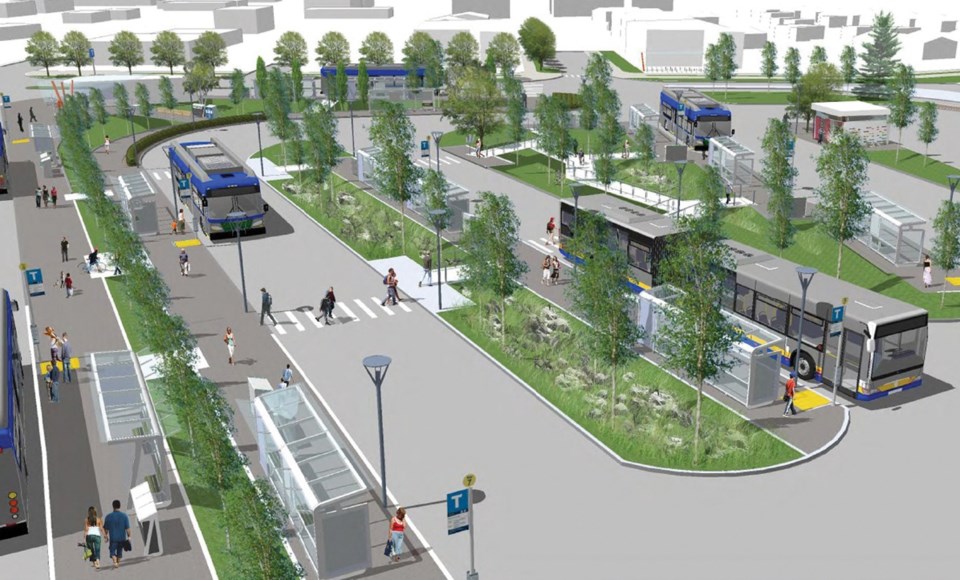The District of North Vancouver is preparing to embark on a major review of its transportation master plan.
District council members met as an informal committee Tuesday afternoon to discuss what should be emphasized in the review, which is to begin in 2017.
Staff’s suggestions included a protected bicycle network, updating the district’s parking policies, a focus on the Main/Marine transit corridor, better co-ordination of traffic signals and whether the district ought to become a vision zero community – a growing movement among cities vowing to design their streets in such a way that there are zero traffic-related deaths or injuries.
But the informal session quickly turned to an airing of grievances as the morning commute of many councillors had been particularly exasperating with near-simultaneous crashes on the Cut, Stanley Park causeway and Westview overpass.
Coun. Jim Hanson said he faces the prospect of losing staff at his North Vancouver law firm, as their commute from across Burrard Inlet saps their quality of life. Hanson said the plan ought to come with some immediate steps that will alleviate congestion.
“I don’t sense the level of urgency in the plan that I sense in the public,” he said. “I’m just really frustrated with being a public official witnessing this failure – this systemic failure – of transportation infrastructure, which after all, is a core function of government.”
And, he added, it’s not just the district but also the province and the North Shore’s other municipalities that need to get on board.
“We need to integrate our efforts with the other civic governments of the North Shore, who are contributing to density without in any way contributing to infrastructure, which is overtaxed,” he said.
Coun. Mathew Bond, who is a transportation systems engineer, said his morning commute to Coquitlam took twice as long as it normally would have with a lineup of stop-and-go traffic on Highway 1 stretching 20 kilometres past the Ironworkers Memorial Second Narrows Crossing.
While creating major new infrastructure takes years and billions of dollars, governments can help influence people’s decisions and improve traffic flow, he said, referring to things like incentivizing carpooling or charging drivers for using the roads at peak times.
“People can change their behaviour today if they so choose,” he said. “Doing some small, incremental things over time over the next two, three or five years, will buy us some time to make those major infrastructure investments and do those plans that are going to provide long-term relief.”
But Coun. Lisa Muri questioned whether residents could be persuaded to leave the car at home, especially when their work, errands or family commitments may require them to travel to several neighbourhoods, numerous times in the day.
“I don’t know how to change my behaviour to get from Lonsdale to Seymour without changing my whole family’s life,” she said. “It’s awesome to think that if you build it, people will get out of their cars and onto a bus or another mode of transportation but is it going to happen? . . . People have cars. They want convenience. They want to be able to get to their destinations quickly.”
Instead, Muri suggested it may be time to pull up the drawbridge on the North Shore. “I envision there’s room for 100 people at the party and there’s 500 in the lineup out the front door and they all want to come into the party. I just want to say to the 400, ‘You know what? We’re full now. You’re just going to have to wait your turn.’ But we’re not doing that,” she said.
Coun. Robin Hicks rubbished the notion that trying to stop population growth would solve any problems, noting that banishing the North Shore’s service workers to the farther-flung suburbs would only add more cars onto local roads.
“We can’t put up barriers or walls like Trump might try to do. People are just going to come here from everywhere,” he said. “We’ve got to learn to live with the population.”
The district has, in partnership with senior levels of government, a number of transportation projects under way, including the new five-lane Keith Road bridge, which should open this fall, separated bike lanes on Lynn Valley Road scheduled to start this month, Spirit Trail connections, upgrades to Phibbs Exchange and $150 million in rebuilds of the Lower Lynn interchanges.
Coun. Roger Bassam and Mayor Richard Walton were absent from the meeting.



